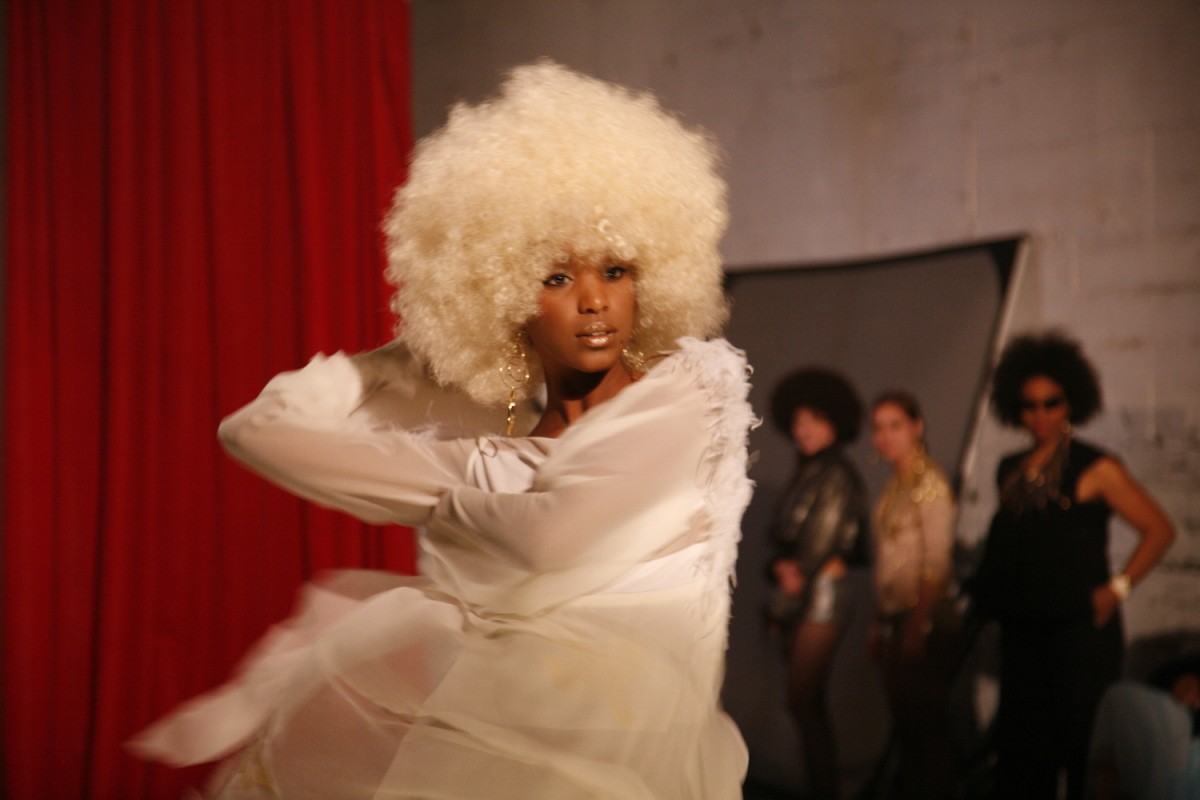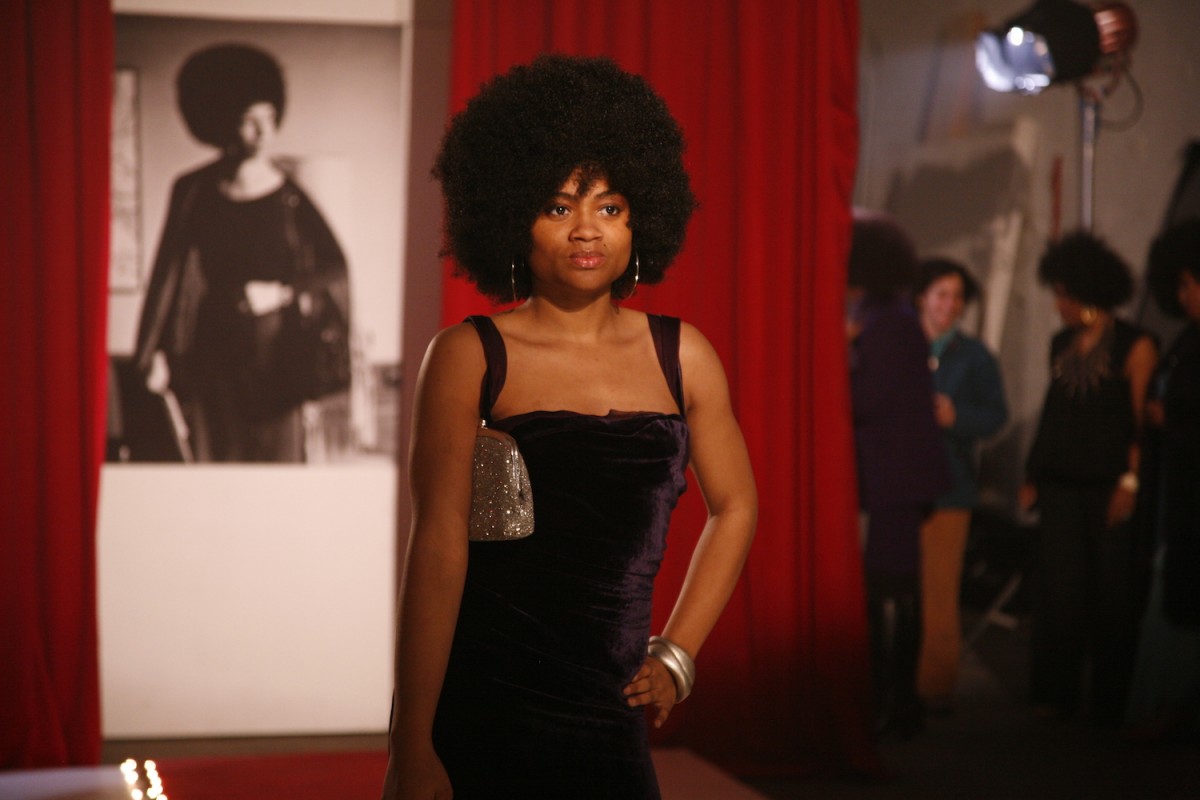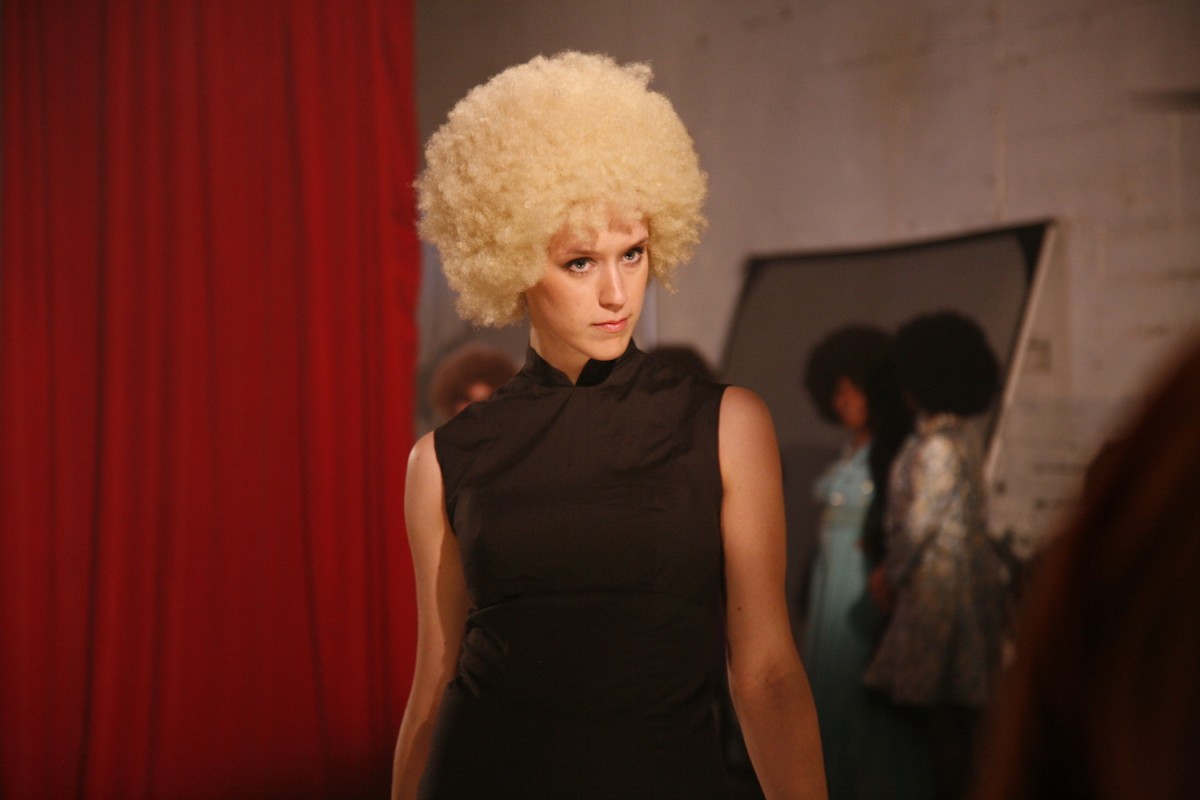Karin Bareman discusses the politics of black hair in relation to Carrie Mae Weems' work 'Afro Chic'.
‘The work tells you what form it needs to take.’
Carrie Mae Weems, in conversation with Dawood Bey in Bomb Magazine.
The setting is a shabby stage bordered by red curtains. A stunningly beautiful young woman enters the scene dressed in a floaty white frock, dancing seductively to the beat. Other women come onto the stage and follow her lead. Swinging their hips along to Marvin Gaye’s Sanctified Lady, these models certainly know how to strut their stuff. They are curvaceous and voluptuous, occasionally bordering on Rubenesque. They throw challenging looks, highly amused glances and many a ‘come-hither’ wink at the camera. They take their sweet time showing off their bodies and perform without any inhibitions. They dress in clothes they feel comfortable in, they wear outlandish jewellery and they confidently sport the biggest of afros. Perhaps most importantly, they are having fun.
https://www.youtube.com/watch?v=xVUh55x9G70
Afro-Chic, 2009-10. 5 minute video projection, 3 TV monitors in frames, © Carrie Mae Weems. Courtesy of the artist and Jack Shainman Gallery, New York.
Weems’ short film Afro Chic (2009) could not possibly look more different from your average collection presentation during say London Fashion Week. Her models are far removed from the ones striding purposefully and quickly down the catwalks in Milan, Paris and New York. They do not dance to the bland music accompanying the event, they strictly adhere to the tight choreography of the spectacle. Unlike the women in Afro Chic, these models are generally straight-hipped, iron-backed and stiff-armed, with high cheek bones, sharp chins and lanky hair. And yes, more often than not, they are white.
The visual tactics Weems deploys in Afro Chic are fascinating. She plays on the visual aesthetics of fashion shows but diverges from them in significant ways. During the average collection, presentation models will be filmed at a distance or from above as they walk down the catwalk. Alternatively, the camera closes in on them and pans upwards from their feet to their hips to their chests to finally arrive at their faces. There is never any direct eye contact between the filmmaker and the models. The clothes are what matter visually, never the women wearing them.
Weems on the other hand films her models fairly close-up. She directs her attention to their faces and expressions. When she deviates from that, she films them from the waist or the shoulders upwards instead. Occasionally she slows down the footage to emphasize a particular move of one of the models or to allow them to look directly back at the camera and, by extension, at the viewer. As a result of this strategy there seems to be a far more equal power balance between Weems’ models and herself in comparison to the high fashion models and the unnamed filmmakers, and by extension the fashion world at large. She also gives back agency to the women by not paying critical attention to what they wear, but by allowing them to let their bodies, their gazes and their chosen identities speak for themselves.
Additionally, Afro Chic riffs off the visual aesthetics established by Blaxploitation movies. The models resemble strong female lead characters such as Cleopatra Jones and Foxy Brown. These protagonists in turn were modelled on Angela Davis, the 1960s counterculture political activist associated with the Communist Party USA, the Black Panther Party and the Civil Rights Movement. More importantly in this context, Davis was a big propagator of the natural hairstyle as opposed to trying to emulate white, lanky hairdos. And whose portrait can be seen casually hanging in the background of the stage? Exactly.
Whereas in most of her earlier works Weems made use of text alongside her photographs to hammer her message home, in Afro Chic Marvin Gaye’s lyrics fulfil that role. Sanctified Lady manages to be both explicitly sexual and invitational as well as reverential towards women. By using one of his songs, Weems makes use of Gaye’s reputation as the ‘Prince of Soul’ as well as a musician preoccupied by sexuality in his music throughout his entire career. Not only that, she also re-enforces the link with the Blaxploitation genre, in which soul and funk feature heavily.
But Afro Chic explores the history of the afro beyond Blaxploitation. For a short period during the 1960s it was seen as a powerful political symbol, a reflection of black pride and a rejection of assimilation and integration. However, by the early 1970s the popularity of the afro started to wane, as it was becoming more and more mainstream as well as being adopted by people of non-African descent. In this way it lost its function as a political statement. The model wearing the big white afro exemplifies this, as well as the white model sporting the big brown one.
Even though Afro Chic was produced well before the recent outcry over Rachel Dolezal, it is interesting to look at the film in that particular light. In my opinion it is no coincidence that Dolezal adopts a large afro. Not only is this a way to present herself as African American, but it is also indicative of her political viewpoints. She resolutely rejects her white heritage, whilst simultaneously identifying with important and influential past black power movements. Ironically enough, during the 1960s the afro was promoted as an easier hairstyle for African Americans to maintain, whereas Dolezal probably has to put in quite some effort to keep her hair in this state.
Weems’ work has often been analysed and deconstructed in terms of race. After all, she rose to prominence with series such as Ain’t Jokin (1987-1988) and Colored People (1989-1990) in which she investigated humour and terminology as a form of stereotyping. With From Here I Saw What Happened And I Cried (1995-1996), Weems critically looked at the use of historic photography to cast African Americans in a particular role. The series also highlighted a serious lack of photographs of and byAfrican Americans in major museum collections. But whilst there is no denying that race factors heavily in her work, beauty, sexuality and gender play an equally important role. After all, her seminal work The Kitchen Table Series (1990) is a reflection on love and relationships, parenthood and gender roles, abandonment and loneliness.
Afro Chic in turn is a comment on how body confidence, politics and physical expressions of inner desire interrelate. The link with politics is probably most dramatically made by one of the models resolutely throwing in a black power salute. At this point in Afro Chic the framed image of Davis is replaced by a portrait of Huey Newton, the erstwhile founder of the Black Panthers. Paradoxically, this political angle to the film might not be sexy enough for art critics and the general audience alike to engage with. It is perhaps for this very reason that Afro Chic has so far not been given the attention it deserves.



